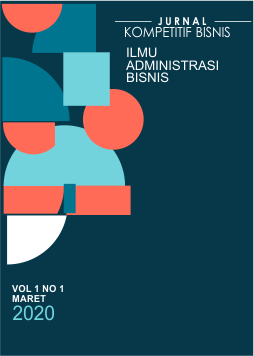MARKET SEGMENTATION ANALYSIS OF DISTRO FASHION CONSUMERS IN BANDARLAMPUNG
(Case Study of Consumer Toro Holic Bandarlampung Distro)
Keywords:
Segmentation, Psychographic, ClusterAbstract
Bandarlampung have a heterogeneous fashion consumer, when viewed from variousfactors and segmentation perspective, which build the author’s reason to do this study. The population in this study were consumers of the Toidi Holic Distro Bandarlampung with a sample of 96 respondents. Data analysis using factor analysis, cluster analysis namely k-means, and crosstab analysis. This study analyzes the consumer segmentation of Toidi Holic Distro based on the variables that underlie the process of selecting consumers in shopping, namely activity, interest, and opinion. Factor analysis is carried out to reduce and group variables into 17 factors that have similarities, and based on these 17 factors a cluster analysis is carried out to divide respondents. Crosstab analysis is used to determine differences in the profile of respondents between clusters. Thus, 3 clusters or segmentation are produced. Cluster activity 22 people have a tendency towards hobbies, social and shopping. Cluster interest has 16 people who tend towards entertainment and fashion. Cluster opinion 58 people have a tendency towards the product and yourself. Meanwhile, the highest buyer segment by the most characteristics of consumer attractiveness is based on the Cluster opinion with 58 members who demographically contain male consumers aged between 15-20 years and are still students. Based on the implications of the research that has been done, companies can better consider segments based on cluster opinions to apply targeting policies in their marketing strategies to more advance the company.
Downloads
Downloads
Published
Issue
Section
License
Hak cipta dan hak kepemilikan lainnya yang berkaitan dengan artikel, seperti hak paten, Hak untuk menggunakan substansi artikel dalam karya masa depan sendiri, termasuk ceramah dan buku,Hak untuk mereproduksi artikel untuk keperluan sendiri, Hak untuk mengarsipkan diri sendiri artikel tersebutHak untuk masuk ke dalam pengaturan kontrak tambahan yang terpisah untuk distribusi non-eksklusif dari versi artikel yang diterbitkan (misalnya, mempostingnya ke repositori institusional atau menerbitkannya dalam sebuah buku), dengan pengakuan atas publikasi awal dalam jurnal ini


